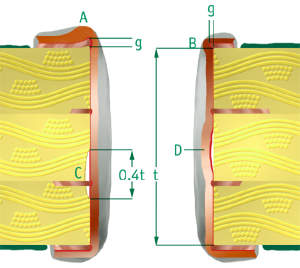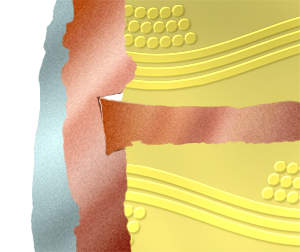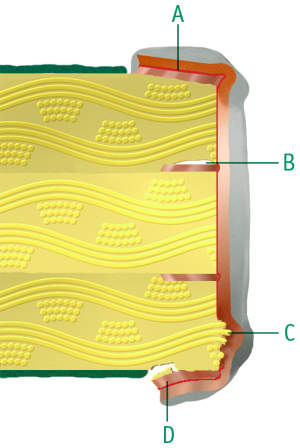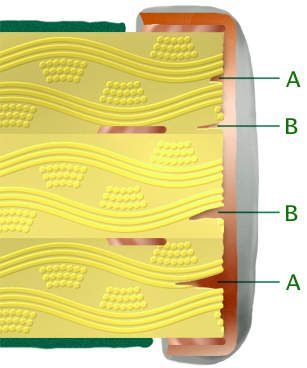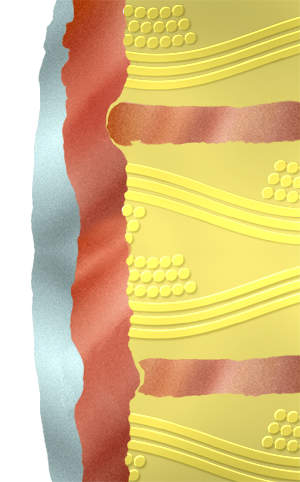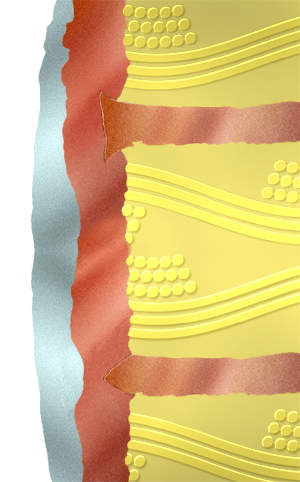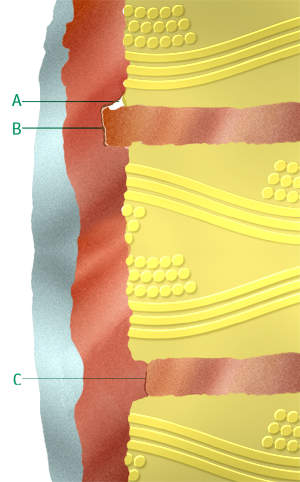What is the Microsection of a PTH?
To check the quality of PTH after the galvanic process we create a microsection of a PTH hole and measure the Cu plating thickness of several holes on every production panel.
On every production panel we include test coupons. From every production batch we select some coupons and make micro sections of the PTH to check the quality of the PTH in the final PCB.
Effects that we may spot but as Eurocircuits want to avoid in production are:
Voids
Nodules
Cracks
Cracks are not acceptable before or after thermal stress, accept for Foil cracks (D) & (C) after thermal stress not extending the through plating.
Other typical cracks:
- (E) Barrel crack – not permitted before or after terminal stress.
- (F) Crack around nodule – not permitted before or after terminal stress.
- (G) Crack in inner pad or inner Cu-layer – not permitted before or after terminal stress.
- (H) Foil-crack – is permitted after thermal stress only on outer layers, provided it does not extend through plating.
Roughness
- Permitted if not reducing plating thickness below min.
Burrs
Plating separation
Inter plane separation
- Not permitted.




